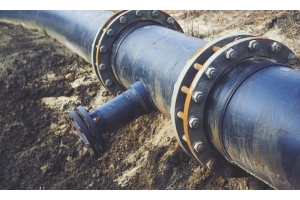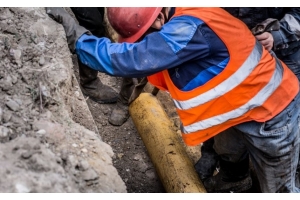How to Achieve a Pipe Isolation in a Non-Isolatable In-Service or Out-of-Service Pipe


Whether for maintenance, testing, or a temporary isolation, the need for an isolation point to isolate, block or create a barrier can be done in-service or out of service. When it comes to creating a required isolation point, there are several different options available to you, including mechanical isolation plugs, mechanical and inflatable line stop pipe plugs thru hot tap, an ice plug, or a live insertion type valve. In this article, we’ll take a look at these different pipe isolation solutions and when you should use each one.
Mechanical isolation plugs
Mechanical isolation plugs provide localized, energized seals of a pipe to perform testing, inspections, improvements or repairs of a pipe. They utilize types of hardware that are manually tightened to center the plug and create an effective, energized pipe seal. Mechanical isolation plugs are often the choice for out of service pipes that require localized isolation, localized pressure testing, integrity testing or simply to create a barrier for gases or liquids residual in the line while performing repairs or improvements. The plugs can be used in low to high pressure ranges and seals can be customized to be compatible with the service in the line.
Mechanical line stop pipe plugs
Mechanical line stop pipe plugs provide workable seals of a pipe to perform inspections, improvements or repairs without disturbing the rest of the system. They are launched thru a size on size completion plug flanged line stop fitting to provide a workable pipe seal. Unlike inflatables, the mechanical line stops are choice low to high pressure, mid to high temperature applications and are limited to straight run of pipe and line having a concentric, geometrically circular internal diameter. Although build up can be mitigated, high build up can pose risk for workable seal, launch or retract failure. The robust design can withstand high pressures, and in combination of another mechanical line stop, can withstand low to mid flow of service. The isolation can be mid to long term.
Inflatable line stop pipe plugs
Inflatable line stop plugs provide a workable seal when launched thru non size-on-size completion flanged line stop fitting as opposed to the mechanical counterpart, that requires a size on size fitting. The inflatable line stop plug is not biased to the concentricity, geometry, orientation, or internal condition of the pipe requiring isolation. The inflatable conforms to the pipe as it inflates, has an exponentially higher sealing surface area and is launched using smaller, lighter equipment with the benefit of the inflatable line stop plug having a smaller foot print and weight as compared to the mechanical line stop. The equipment can also be used for multiple size inflatable plugs.
Ice plugs
An ice plug, or freeze line stop, is a pipe seal method that uses various cryogenic media to freeze the fluids within the line. The ice plug holds back the service of the pipeline in a similar way as mechanical and inflatable line stop plugs, without the need of a hot tap. Freeze stops are commonly used in situations where the pipe integrity is acceptable and no existing line stop fitting is available or a hot tap can’t be installed to launch a mechanical or inflatable line stop plug. You can successfully form an ice plug in applications that have no flow, temperature less than 120⁰F and have an attainable freeze point for the cryogenic media to be used. Freeze plug has various hold times that depend on media source and monitoring requirements to maintain the freeze plug frozen.
Insertion valve
An insertion valve is used when a permanent line isolation solution is required instead of the temporary mechanical, inflatable or freeze stop pipe plug. An insertion valve is set through bolt on fitting on the pipe, then performing a hot into the while in-service. The valve bonnet/gate cartridge is installed thru the fitting nozzle, secured in place and allows for full valve type operation. There are various types, makes and models of line insertion valves. Most applications for this type of isolation is in low to mid pressure water, wastewater or non-critical services. The pipe integrity, geometry and other factors go into consideration when qualifying this solution.
At Petersen, we have multiple conventional pipe isolation options with the agility to engineer custom solutions for our customers. If you have any questions about using mechanical or inflatable line stop plugs, mechanical plugs, an ice plug, or a live insertion valve, contact us today!







